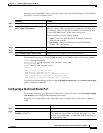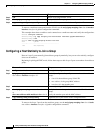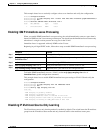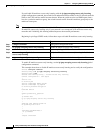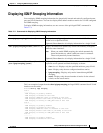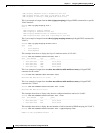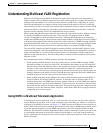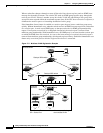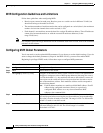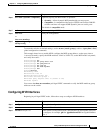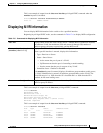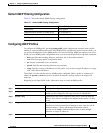
17-14
Catalyst 2950 Desktop Switch Software Configuration Guide
78-14982-01
Chapter 17 Configuring IGMP Snooping and MVR
Understanding Multicast VLAN Registration
When a subscriber changes channels or turns off the television, the set-top box sends an IGMP leave
message for the multicast stream. The switch CPU sends an IGMP group-specific query through the
receiver port VLAN. If there is another set-top box in the VLAN still subscribing to this group, that
set-top box must respond within the maximum response time. If the CPU does not receive a response, it
eliminates the receiver port as a forwarding destination for this group.
If the Immediate-Leave feature is enabled on a receiver port, the port leaves a multicast group more
quickly. Without Immediate Leave, when the switch receives an IGMP leave message from a subscriber
on a receiver port, it sends out an IGMP query on that port and waits for IGMP group membership
reports. If no reports are received in a configured time period, the receiver port is removed from
multicast group membership. With Immediate Leave, an IGMP query is not sent from the receiver port
on which the IGMP leave was received. As soon as the leave message is received, the receiver port is
removed from multicast group membership, which speeds up leave latency. Enable the Immediate Leave
feature only on receiver ports to which a single receiver device is connected.
Figure 17-3 Multicast VLAN Registration Example
SP1
Multicast
data
Multicast
data
Customer
premises
Multicast VLAN
SP
SP
RP = Receiver Port
SP = Source Port
Note: All source ports belong to
the multicast VLAN.
Hub
TV
data
Set-top boxSet-top box
TV TV
PC
SP
SP
SP
SP
IGMP join
Cisco router
Multicast
server
Catalyst 3550 switch
Catalyst 2950
switch
Catalyst 2950
switch
Catalyst 3550 switch
SP2
RP1 RP2 RP3 RP4 RP5 RP6 RP7
74593
S1




